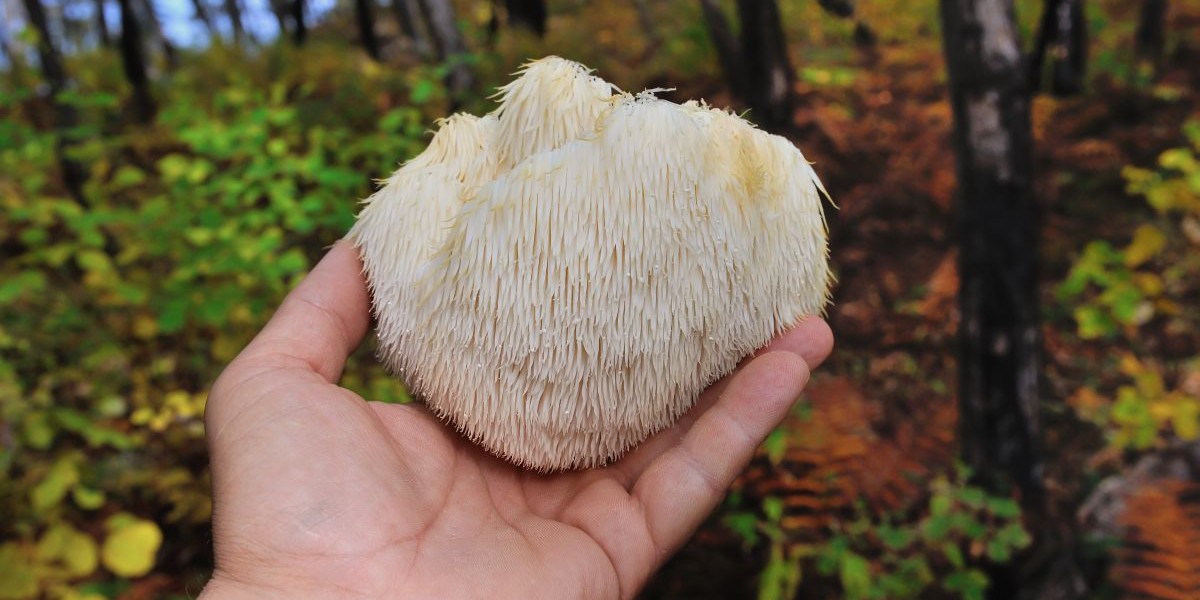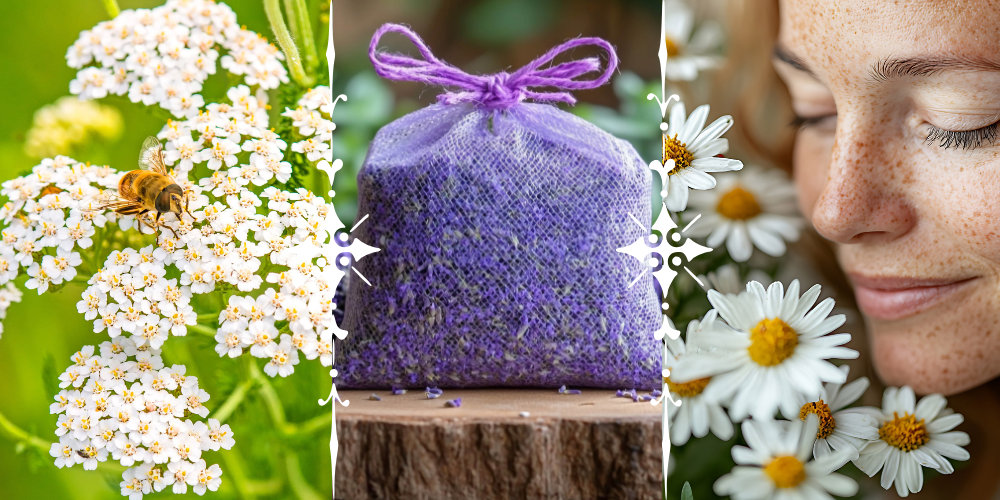
Lion’s Mane (Hericium erinaceus): The Mushroom That Feeds Your Mind and Nerves
In ancient forests, you might miss it if you’re not looking closely — a cascading white mass that looks more like a waterfall of icicles than a mushroom. But this strange and beautiful fungus, known as Lion’s Mane, has been treasured in Eastern medicine for centuries. Today, science is finally catching up to what traditional healers have long known: this mushroom nourishes the brain, soothes the nerves, and restores balance from the inside out.
Lion’s Mane isn’t just food — it’s a medicine, a teacher, and a quiet healer that works with your body, not against it. It’s one of those rare natural remedies that gently awakens what’s been dulled by stress, age, and modern living. Where synthetic stimulants create a spark that burns fast, Lion’s Mane feeds the flame itself — keeping your energy grounded and focused.
🌿 Profile
- Scientific name: Hericium erinaceus
- Family: Hericiaceae
- Common names: Lion’s Mane, Bearded Tooth, Pom Pom Mushroom, Hedgehog Mushroom
- Habitat: Found on dead or dying hardwood trees, especially beech, oak, and maple.
- Parts used: The fruiting body (the white, shaggy “mane”) and the mycelium.
Lion’s Mane grows throughout North America, Europe, and Asia. It thrives in old-growth forests, feeding on decaying wood and enriching the ecosystem as it breaks down matter into fertile soil. In nature, it’s a symbol of renewal and regeneration — the same effects it has inside the human body.
This mushroom’s unusual structure — cascading, tooth-like spines instead of a cap — reflects its uniqueness among fungi. It’s not a forager’s mushroom that hides; it hangs boldly in the open, soft and snow-white, like a burst of light in shadowed woods. That same vitality carries into its medicinal properties: cleansing, restorative, and illuminating to both body and mind.
💫 Key Benefits of Lion’s Mane
Lion’s Mane is unique among medicinal mushrooms for its neuroregenerative properties. It doesn’t just protect your brain — it helps rebuild it.
🧠 Supports Brain and Cognitive Health
Lion’s Mane contains compounds called hericenones and erinacines, which stimulate the production of nerve growth factor (NGF) — a protein essential for the growth and repair of neurons. This helps improve memory, focus, and cognitive function over time.
In studies, people who took Lion’s Mane extract experienced sharper memory, better concentration, and less brain fog. It’s a gentle, natural nootropic — one that heals instead of overstimulating.
Over time, this mushroom works much like a gardener in the mind — pruning damaged pathways and encouraging new growth. It’s particularly beneficial for those who feel mentally “drained” or whose clarity has dimmed with age. By protecting nerve endings and boosting neural communication, Lion’s Mane helps restore a steadier rhythm to thought and perception.
🌙 Reduces Anxiety and Depression
By supporting the nervous system, Lion’s Mane helps regulate mood and reduce inflammation in the brain. Some studies show that it can ease anxiety and mild depression, likely by repairing the gut-brain axis and promoting healthy neurotransmitter balance.
This mushroom’s effect on mood is subtle yet profound — more like lifting a fog than flipping a switch. Because it reduces systemic inflammation, it calms the nervous system from the inside out, helping to break the stress cycle that modern life often traps us in. For those who struggle with restless thoughts or low motivation, Lion’s Mane offers a quiet path toward emotional steadiness.
⚡ Fights Inflammation and Oxidative Stress
Lion’s Mane contains powerful antioxidants that help combat chronic inflammation — a major factor in aging and disease. Its beta-glucans also enhance immune defense, protecting against infections and cellular damage.
Unlike synthetic anti-inflammatories, Lion’s Mane doesn’t suppress your immune system; it strengthens it. Its compounds act as adaptogens, teaching your body how to maintain balance under stress. This is especially important for people exposed to pollution, poor diet, or chronic fatigue — conditions that quietly inflame the body over time.
💖 Supports Heart and Gut Health
This mushroom has been shown to improve fat metabolism, balance cholesterol, and protect the stomach lining from ulcers. It strengthens the gut microbiome, which in turn supports immunity and mood stability.
The gut is often called the “second brain,” and Lion’s Mane nourishes both. It helps repair intestinal walls, reducing inflammation that contributes to autoimmune conditions and mood disorders. When your digestion runs smoothly, so does your thinking — and this mushroom bridges those two worlds beautifully.
🌸 Traditional and Medicinal Uses
For centuries, Lion’s Mane has been a revered tonic in Traditional Chinese Medicine (TCM), known as Hou Tou Gu (猴头菇). Ancient healers prescribed it for digestive issues, weakness, and “lack of spirit” — what we’d now call brain fog or low mood.
In folk medicine, it was also used to treat:
- Fatigue and poor focus
- Nerve damage or tingling (neuropathy)
- Stomach inflammation or ulcers
- Memory loss associated with aging
In monasteries, Buddhist monks brewed Lion’s Mane tea to enhance focus and meditation. It was believed to “strengthen the spirit” and sharpen awareness during long hours of silence. That quiet energy remains part of its essence today — clarity without chaos, alertness without anxiety.
🍵 How to Use Lion’s Mane
You can consume Lion’s Mane fresh, dried, or as an extract. Each form has different benefits:
🍽️ Fresh Mushroom
- Cook it like seafood — it has a crab or lobster-like texture.
- Adds a mild, nutty flavor to soups, stir-fries, or teas.
Cooking Lion’s Mane releases its beneficial compounds and makes it more digestible. Sautéing it in a bit of butter or oil enhances both flavor and bioavailability. If you can find it fresh, treat it like a delicacy — it nourishes body and spirit in one bite.
🌿 Tea or Decoction
- Simmer 1–2 teaspoons of dried Lion’s Mane in 2 cups of water for 15–20 minutes.
- Drink daily for nerve and memory support.
Herbalists often recommend combining Lion’s Mane tea with other adaptogens like reishi or ashwagandha for balanced energy and calm. It’s an ideal morning brew for clarity without caffeine’s crash.
💊 Powder or Capsules
- Convenient for daily brain support; check for dual-extracted varieties (water and alcohol) to ensure full-spectrum compounds.
Look for organic, fruiting-body-based powders. Avoid those that list mostly mycelium on grain — they tend to have far fewer active compounds.
🌼 Tincture (Extract)
- Made by steeping dried fruiting bodies in alcohol for several weeks.
- Take 1–2 droppers daily in tea or water for concentrated benefits.
Tinctures are ideal for people wanting long-term brain and nerve support. Their shelf life and potency make them a staple in any herbal apothecary.
🌱 How to Forage and Identify Lion’s Mane
Lion’s Mane is distinctive and easy to identify:
- It appears as a white, shaggy mass hanging from hardwood trees (especially beech and oak).
- Its “teeth” or spines are soft, white to creamy, and drip downward like icicles.
- Young mushrooms are bright white; older ones turn yellowish or brown.
It’s non-toxic and has no poisonous look-alikes, making it one of the safest mushrooms for beginners to identify.
When foraging:
- Harvest young, white specimens.
- Cut gently at the base — avoid pulling.
- Always leave part of the mushroom to allow regrowth.
As always, forage responsibly — never take more than you need, and respect the ecosystem. Many foragers describe finding Lion’s Mane as a kind of blessing — its ghostly white glow in the forest feels almost otherworldly, a sign that the land is still alive and generous.
🌾 How to Grow Lion’s Mane at Home
Growing Lion’s Mane is surprisingly easy. You can buy ready-to-use grow kits or inoculate logs with spawn.
🪵 Log Method:
- Drill holes into hardwood logs (like oak or maple).
- Insert Lion’s Mane plugs or sawdust spawn.
- Seal with wax and keep in a shaded, moist spot.
- In 6–12 months, you’ll see white clusters begin to form.
🏠 Indoor Grow Kit:
Perfect for beginners — mist the bag daily and watch the “mane” emerge within weeks.
Homegrown Lion’s Mane isn’t just a source of nutrition — it’s a living reminder that medicine can be cultivated with patience, not purchased on a shelf. Its slow, graceful growth mirrors its effect on the mind: steady, pure, and rewarding.
🍄 Comparison: Lion’s Mane vs. Other Medicinal Mushrooms
| Mushroom | Primary Benefit | Traditional Use | Key Compounds | Best For |
| Lion’s Mane (Hericium erinaceus) | Brain and nerve regeneration | Focus, mood, mental clarity | Hericenones, erinacines | Cognitive health, nerve repair |
| Reishi (Ganoderma lucidum) | Immune balance and longevity | Vitality, stress reduction | Triterpenes, polysaccharides | Immunity, sleep, stress resilience |
| Chaga (Inonotus obliquus) | Antioxidant and anti-inflammatory | Stomach health, vitality | Betulinic acid, melanin | Immune protection, inflammation |
| Cordyceps (Cordyceps militaris) | Energy and endurance | Stamina, lung support | Cordycepin, adenosine | Fatigue, athletic performance |
Each of these fungi holds a different kind of wisdom. While reishi calms and chaga strengthens, Lion’s Mane awakens. It brings light to fogged minds and balance to weary systems, complementing the others beautifully in a holistic regimen.
⚠️ Precautions and Considerations
Lion’s Mane is remarkably safe and well-tolerated. However:
- If you have mushroom allergies, start with small amounts.
- It may interact with blood-thinning medications.
- Because it promotes nerve growth, people with autoimmune conditions should consult a healthcare provider before daily use.
Herbal medicine teaches patience — the effects of Lion’s Mane build slowly over time. Unlike caffeine or synthetic nootropics, its benefits grow stronger with consistency. For best results, take it daily for several months, allowing your body to adjust and heal naturally.
🌿 Final Thoughts
Lion’s Mane is more than a supplement — it’s a bridge between ancient healing and modern science. It nourishes not just the mind, but the inner spark of renewal.
In a world that’s always racing, this mushroom invites you to slow down and strengthen your foundation — to build focus, clarity, and calm from within.
Like the forests it grows in, Lion’s Mane restores what’s been lost and renews what’s been damaged. It’s the medicine of regeneration, both for mind and soul.
📘 Discover More in The Forgotten Home Apothecary
If you love natural healing and want to bring the wisdom of herbal medicine into your daily life, The Forgotten Home Apothecary is your perfect guide.
Inside, you’ll find:
- Step-by-step recipes for brain tonics, herbal teas, and immune elixirs
- Guides to foraging and identifying medicinal plants and mushrooms
- Natural remedies for stress, fatigue, and inflammation
- Instructions for creating your own home apothecary using simple, natural ingredients
This is more than a book — it’s a rediscovery of your connection to the earth and its quiet power to heal.
👉 Explore The Forgotten Home Apothecary here and start building your natural medicine chest today.
You may also like:
 The Ultimate Brain Elixir for Supercharged Cognitive Power
The Ultimate Brain Elixir for Supercharged Cognitive Power
How To Make The Strongest Natural Antibiotic (Video)
Herbs That Help Your Brain & Gut At The Same Time
What Cinnamon Does to Senior Brains
Your Gut Called – It Wants Kombucha








